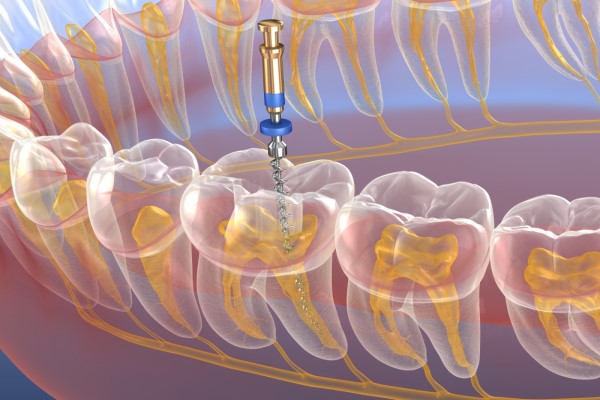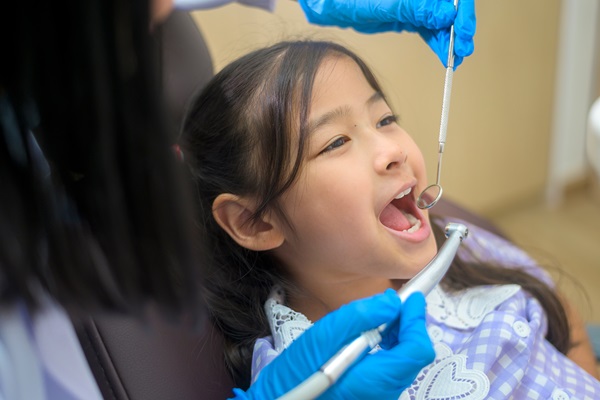What Happens During a Baby Root Canal Procedure?

Looking for baby root canal information? Pediatric dentists are dental specialists who serve as great resources to utilize when parents are preparing their child for a pediatric root canal. Baby root canals are similar to traditional adult ones; however, they are geared toward the primary teeth, also known as the baby teeth. Of course, the procedure is altered slightly in order to accommodate younger patients as there tends to be more anxiety and fear of the unknown.
Although the term "root canal" can spark fear in parents, it is important to know that the procedure is safe, seamless, and very much needed in order to restore good oral health. Continue reading to find out more about what is involved.
What is a baby root canal?
Below is a quick overview of baby root canals, including what they are and how the treatment process works. This information can be helpful for parents who are unsure of what to expect from this procedure.
Baby root canal defined
A baby root canal is a restorative procedure that is done to combat tooth loss or bad oral health. Ultimately, the goal of the procedure is to reinstate good oral health. The procedure was once known to be invasive; however, modern-day practices have allowed for the evolution of gentler techniques, especially as it relates to baby root canals. This reduces pain during and after the procedure is complete.
The baby root canal process
Outlined below are the steps of the baby root canal procedure, which can be helpful to review in-depth prior to the child's appointment. This helps set expectations, thus eliminating any surprises later on.
- The pediatric dentist will apply a numbing agent and possibly a sedative, such as laughing gas. These are used to make sure that the child is comfortable during the baby root canal procedure
- Once the child is comfortable, the pediatric dentist can start the procedure, with the first step being the removal of the infected pulp within the baby's tooth
- The pulp is removed using a dental drill, which can cause some slight discomfort; however, with the numbing agent, the child is unlikely to feel anything at all. Pediatric dentists often administer headphones or recommend that parents bring some as the sound of the dental drill can be frightening
- After the infected pulp has been removed, the pediatric dentist will clean the inner cavity out and disinfect it. This ensures that there is nothing left behind and that the cavity is left in good condition before being fully restored
- Gutta-percha, which is a rubber material, is then used to fill the tooth and seal it off from future damage. This material is safe for the tooth and will not cause any harm.
- Finally, the pediatric dentist will place a temporary dental crown, which is typically made of composite resin
In some cases, the temporary dental crown will be used permanently as it is made of composite resin. Baby teeth do not necessarily need a permanent dental restoration since the tooth will be replaced with an adult tooth later on. However, if the child is very young, a permanent crown may be placed to ensure that the freshly restored tooth remains in good health until the adult tooth comes in.
What else to know
While baby root canals may not seem necessary since the tooth will later be replaced by an adult tooth, it is good to know that a pediatric dentist will only recommend the procedure when absolutely necessary. Having a tooth in such bad shape that it decays or falls out can lead to other problems that may affect the surrounding areas. For example, if the infected tooth completely decays and falls out, what is left is an empty space, which can cause a shift of the other teeth if the adult tooth is not coming in. This may lead to the need for additional treatment, such as orthodontic appliances. It is key to understand that baby teeth play a role in the health of adult teeth.
Does your child need a baby root canal?
When parents are preparing children for a baby root canal, it can be helpful to first visit the pediatric dentist. This gives the child an opportunity to get comfortable with their surroundings, thus making the actual procedure day much easier. To find out more about baby dental crowns and how they work, it is a good idea to contact our office today so that we can answer your questions.
Request an appointment here: https://www.grandparkwaypediatricdental.com or call Grand Parkway Pediatric Dental at (832) 579-0960 for an appointment in our Richmond office.
Check out what others are saying about our dental services on Yelp: Root Canal Treatment in Richmond, TX.
Recent Posts
A pediatric root canal can restore your child’s infected tooth. The pediatric dentist will assess the child’s painful tooth. Recommending this procedure can prevent the infection from spreading. Here are the details on what to expect after your child’s scheduled pediatric root canal.Preparing the child well can cause the young patient to relax and cooperate.…
A baby root canal is sometimes necessary for your child. It is also a common treatment that is often performed on this type of teeth. A root canal treatment is usually carried out on an infected tooth. This can happen because of decay, but it can also be because of an injury to the tooth.…
A baby root canal is performed to save a baby tooth with a compromised pulp chamber. It often brings an end to any pain the child is dealing with. You might find yourself wondering why pediatric dentists are concerned with saving baby teeth since they will eventually fall out. The simple answer to that question…
Pediatric dentistry stresses the importance of keeping the primary teeth in place. For this reason, if your child’s tooth is damaged, your child may have a root canal procedure. This is done to save the tooth until it naturally falls out. But you may be wondering just when your child will need this type of…


